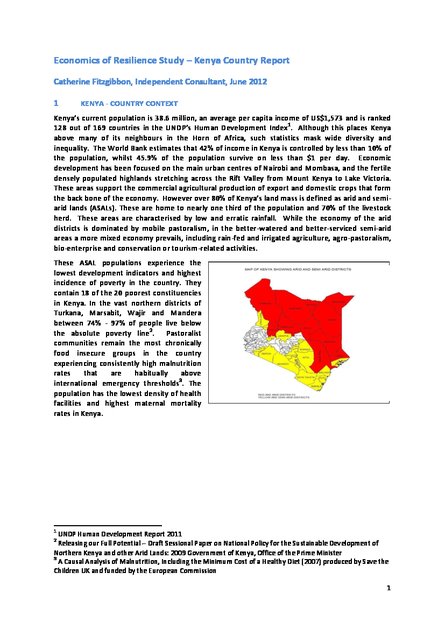
Kenya’s current population is 38.6 million, an average per capita income of US$1,573 and is ranked 128 out of 169 countries in the UNDP’s Human Development Index1 . Although this places Kenya above many of its neighbours in the Horn of Africa, such statistics mask wide diversity and inequality. The World Bank estimates that 42% of income in Kenya is controlled by less than 10% of the population, whilst 45.9% of the population survive on less than $1 per day. Economic development has been focused on the main urban centres of Nairobi and Mombasa, and the fertile densely populated highlands stretching across the Rift Valley from Mount Kenya to Lake Victoria. These areas support the commercial agricultural production of export and domestic crops that form the back bone of the economy. However over 80% of Kenya’s land mass is defined as arid and semiarid lands (ASALs). These are home to nearly one third of the population and 70% of the livestock herd. These areas are characterised by low and erratic rainfall. While the economy of the arid districts is dominated by mobile pastoralism, in the better-watered and better-serviced semi-arid areas a more mixed economy prevails, including rain-fed and irrigated agriculture, agro-pastoralism, bio-enterprise and conservation or tourism-related activities
